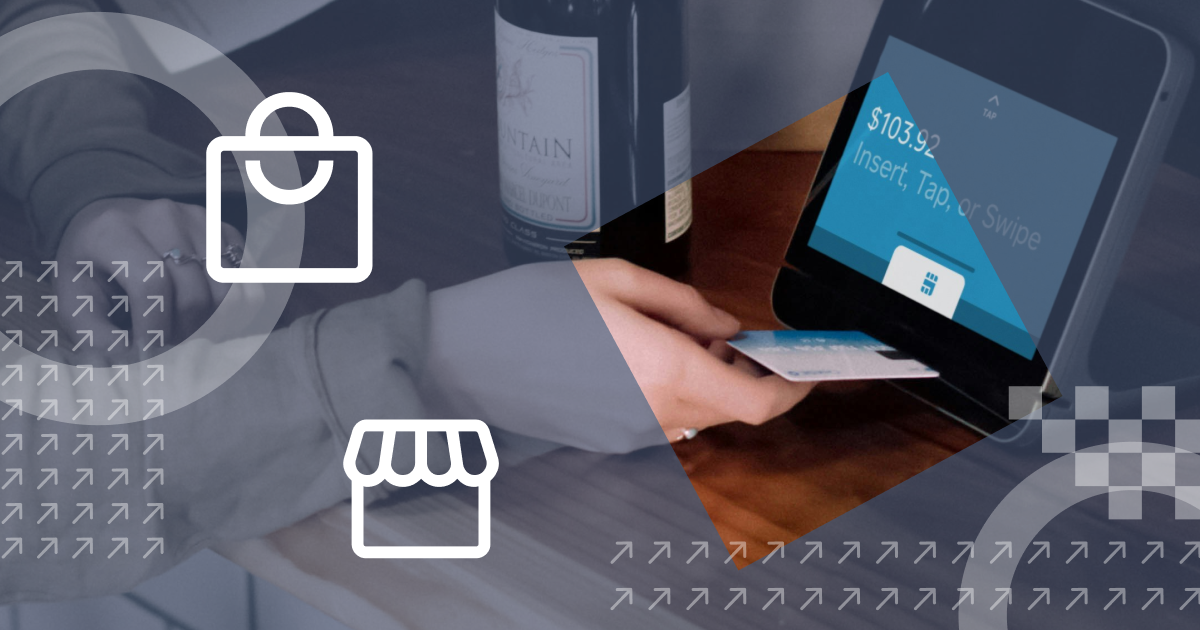How loyalty program optimization drives customer retention

Loyalty program optimization boosts customer retention by offering personalized rewards, enhancing engagement and increasing lifetime value. From points-based systems to value-driven models, tailored programs create emotional connections and drive repeat business.
Highlights
You'll learn about loyalty program optimization: The key to customer retention.
- Personalized rewards: Ensure that perks align with customer needs to create the proper emotional connection
- Value alignment: Create customer reward programs that resonate with customer values, strengthening brand loyalty
- Tiered systems: Motivate customers to climb ranks, encouraging increased spending and loyalty
- Seamless experience: Implement user-friendly systems for easy participation and reward redemption
Opt for a headless CMS to manage customer profiles, harmonize customer reward programs and deliver omnichannel experiences.
An optimized loyalty program can help drive business success. When matched to business logic, it enhances customer retention, engagement and long-term revenue.
As customer needs evolve, now is a good time to revisit and refine your approach to loyalty and reward programs. Keep reading to learn why loyalty program optimization is essential, strategies for implementing it and the role of a headless CMS.
What is loyalty program optimization?
Loyalty program optimization is the process of improving loyalty programs to increase customer engagement and retain existing customers. The goal is to make the program so effective that it encourages repeat business and improves customer lifetime value (CLV).
Optimized loyalty programs leverage customer data insights to tailor rewards. This ensures that the rewards are relevant and create the right emotional connections, improving customer relationships. It is not merely about adding generic perks that may or may not resonate with the customer. When done right, loyalty programs can turn occasional customers into frequent customers and brand advocates.
The benefits of optimizing loyalty programs
An optimized loyalty program improves several key metrics that matter to modern businesses in the following ways:
- Better customer retention: It provides relevant, meaningful rewards that help businesses to reduce churn rates. For instance, a tiered program with increasing benefits motivates customers to engage more and climb the ranks.
- Improved customer lifetime value (CLV): When customers feel valued, they tend to buy more of the brand's products. This increases the average order value and extends their monetary contribution to the brand.
- Increased customer referrals: Loyalty programs can include referral bonuses and satisfied customers who recommend your brand.
- Enhanced customer data insights: You can use loyalty programs to track customer behaviors and spending patterns. This approach gives you extra insights to refine marketing strategies, offer personalized experiences and identify new growth opportunities.
- Strengthened brand loyalty: Reward programs that align rewards with customers' values help your business stand out from competitors. This creates strong emotional connections that lead to brand loyalty.
Overcome traditional CMS issues with Contentstack: Are you tired of slow development times and rising costs due to legacy monolithic suites? Contentstack offers a modern, component-based solution designed for the needs of today's enterprises. Discover agility and improved ROI. Request a demo to learn more.
Types of loyalty programs and how to optimize them
Understanding the types of loyalty programs available is crucial for optimization. Each has advantages, and tailoring them to your audience ensures relevance and effectiveness.
Points-based rewards systems
Customers earn points for purchases and can redeem the points for discounts or rewards. An example is an airline frequent flyer program offering miles that can be converted to discounts on air tickets. A points system should be easy to understand. To optimize it:
- Add a referral points system
- Ensure that redemption is flexible and can be used as part of payment
- Display earned points in real-time and offer bonus points on customer milestones, such as birthdays
Tiered loyalty programs
Tiered loyalty programs offer increasing rewards as customers move through tiers based on their spending. To optimize tiered rewards;
- Ensure the rewards at each level feel significant
- Make tier progression transparent
- Use gamification tactics, like progress bars, to keep customers engaged
Value-based and community-driven models
Value-based loyalty programs align rewards with a cause that resonates with your customers—for instance, donating to a charity or supporting a social cause. Constantly communicate the impact of customers' contributions to give them a sense of pride and ownership.
Subscription or paid loyalty programs
These loyalty programs offer extra perks to customers who subscribe to a service. These perks may include free shipping, early access to products and more. These perks are usually not available to non-subscribers. To improve paid loyalty programs, offer clear value from the start to justify the cost. Also, ensure the benefits continually exceed those provided by free programs.
- Implement challenges, points and achievement scores for tasks
- Reward members with discounts on their subscriptions for referring new paid subscribers
- Offer your subscribers exclusive access to new product launches or beta testing opportunities
Strategies to maximize ROI of loyalty programs
A high-performing loyalty program does not only stop at retaining customers. It offers measurable ROI that benefits the business. Here are strategies to maximize results:
- Leverage customer profiles: This allows you to personalize rewards. Use CRM tools and data analytics to segment your audience. For instance, you can tailor discounts based on purchase history. That way, customers know they are being rewarded the more they spend.
- Use the "home stretch effect": With this strategy, you offer a high-value reward to customers nearing a spending milestone. This motivates them to buy more. For instance, provide bonus points for spending 10% more to reach the next tier.
- Use win-back campaigns: This targets 'at-risk' customers, such as those who have not engaged recently. With these campaigns, you can incentivize them to return. Examples include exclusive discounts or upgrades via email campaigns.
- Encourage referrals via shared incentives: Loyal customers can help bring more business your way. Reward the referrer and the referred person with benefits to promote customer acquisition while reinforcing customer loyalty.
The role of customer engagement in loyalty program success
Engaged customers are the most likely to partake in and benefit from loyalty programs. Consistent communication, personalization and social media integration are essential. For example, Starbucks' social media campaigns allow customers to share their experiences within the loyalty program.
How loyalty program optimization enhances customer retention
Optimized loyalty programs go beyond offering perks. They allow you to create the right connections with your customers. By recognizing and rewarding them, you make them feel valued, leading to repeat purchases and referrals.
- Emotional connection: Optimized loyalty programs create an emotional bond with customers, leading to higher lifetime value and word-of-mouth referrals.
- Increased purchase frequency: Well-designed loyalty programs motivate customers to make more frequent purchases, improving customer retention rates.
- Higher average order value: Customer loyalty rewards tied to spending encourage customers to increase their basket size for each transaction.
The role of a headless CMS
Using a headless CMS can ease the process of managing and optimizing loyalty programs. You can manage complex customer profiles, unify loyalty programs and implement real-time updates. Here are other ways it helps.
- Easier A/B testing: You can quickly A/B test different loyalty program interfaces or features, enabling data-driven optimization.
- Manage content for customer segments: You can have different loyalty programs for various customer segments. A headless CMS enables you to track each segment and deliver the matching offers when required.
- Cost-efficient updates: Its modular approach allows you to easily update or add new loyalty features without writing new backend code.
- Omnichannel consistency: Your customers can access and onboard to loyalty programs or redeem rewards on any platform without friction.
- Real-time content updates: Headless CMS allows for instant updates to loyalty program content across all channels, so members always see the most current information and offers.
Actionable steps to optimize customer loyalty programs
A successful customer loyalty program improves customer engagement, drives loyalty and boosts revenue. It also helps you acquire new customers. Follow these steps to get started with one.
- Define goals: Identify what success would look like. For instance, do you want to acquire, retain or engage more customers? Or would you like to grow revenue?
- Analyze your audience: Analyze customer purchasing and interaction patterns and relevant demographics. Then, use the data to design the loyalty program.
- Deploy relevant tech tools: These may include a headless CMS and CRM. These tools enable you to harmonize loyalty programs and manage content and customer profiles.
- Pilot test your program: After designing the program, conduct a pilot test. This approach allows you to launch on a small scale, analyze data and make iterative improvements.
- Consistently track key metrics: Outline and track relevant metrics like CLV, churn rates and ROI. That way, you track progress and improve the program when required.
Best practices for loyalty program management
The best loyalty programs take out the guesswork and focus on the data, ensuring that strategies can be repeated and scaled. Here are some best practices to start with.
- Set clear goals: Set clear and measurable goals. This will give you a target to work towards. For example, your goal may be to reduce churn by 15% or increase revenue by 15%.
- Collaborate with partners: You may also consider partnerships to expand your program's value without straining your budget. For example, Delta Airlines partners with Starbucks to reward Skymiles customers with 1 mile per $1 spent on Starbucks coffee.
- Automate the process: Using automation allows you to manage enrollment, track rewards and scale strategies.
Overcoming challenges in loyalty program optimization
Optimizing loyalty programs comes with hurdles. Here are some common issues and some strategies to manage and overcome them:
- Customer churn: Combat churn by using predictive analytics to identify patterns. With that, you can offer proactive customer support that engages at-risk customers with attractive incentives.
- Rising costs of rewards: Balance cost-efficiency with quality by offering non-monetary perks like exclusive content or experiences. You can also negotiate partnerships to get better reach and manage costs.
- Evolving expectations: Consumer preferences change. To manage that, focus on customer data, benchmark competitors and test new features.
Case study
MTR
MTR ran two distinct loyalty programs. The MTR Club program focused on transit customers, while their malls had a separate membership program. By creating a unified loyalty program, customers would have one profile across all its digital experiences.
They chose Contentstack to manage the loyalty program optimization. The headless CMS enabled them to integrate existing MTR channels and experiences, unify the loyalty programs and merge customer profiles into one. This approach improved customer satisfaction and led to better retention.
Read more to see how MTR optimized its loyalty programs to drive customer retention.
Fast-track digital experiences with Contentstack. Need to create digital experiences quickly? Contentstack's content and editorial engine enables you to reach new markets and create digital experiences faster. Manage content with ease and speed. Start your free trial today.
Future trends in loyalty programs
Technology and innovation will redefine loyalty programs for many years to come. Here are some of the ways:
- Gamification: To improve the experience of loyalty programs, engaging and fun game elements will be used more frequently. These may include leaderboards, progression systems for tiered programs, etc.
- Value-driven rewards: Modern consumers expect brands to align with sustainable and eco-friendly values. So, more brands will align with that to support social and environmental causes.
FAQ section
What are the key elements of a successful loyalty program?
A successful loyalty program should have clear goals, compelling rewards and personalized offers. It should also be seamless and easy for customers to join and participate in
How do loyalty programs improve customer retention?
Customer loyalty programs create emotional value and give customers the incentive to buy more of a brand's products. By doing so, customers may become more loyal to specific brands, which ensures they remain with the brand.
What are the best tools for loyalty program optimization?
Tools like CRM solutions can help with customer data. Marketing automation systems can also help you manage loyalty campaigns, and a headless CMS allows you to manage customer interactions and unify loyalty programs, like the case of MTR.
How can data insights improve loyalty programs?
Data insights enable you to note patterns that can be used to predict customer behaviors. They are also valuable for creating personalized offers, which in turn allow you to make impactful program adjustments.
Learn more
Loyalty program optimization improves customer loyalty and retention, drives revenue growth and helps you acquire new customers. To implement it, evaluate your current loyalty programs to identify gaps. Then, analyze data insights to have a clear understanding of what your customers need.
Ensure that your loyalty programs resonate with customers, personalize the rewards and automate the process. Use a headless CMS to manage customer interactions, organize multiple loyalty programs and deliver relevant content to different customer segments. Talk to us today to get started.
About Contentstack
The Contentstack team comprises highly skilled professionals specializing in product marketing, customer acquisition and retention, and digital marketing strategy. With extensive experience holding senior positions at renowned technology companies across Fortune 500, mid-size, and start-up sectors, our team offers impactful solutions based on diverse backgrounds and extensive industry knowledge.
Contentstack is on a mission to deliver the world’s best digital experiences through a fusion of cutting-edge content management, customer data, personalization, and AI technology. Iconic brands, such as AirFrance KLM, ASICS, Burberry, Mattel, Mitsubishi, and Walmart, depend on the platform to rise above the noise in today's crowded digital markets and gain their competitive edge.
In January 2025, Contentstack proudly secured its first-ever position as a Visionary in the 2025 Gartner® Magic Quadrant™ for Digital Experience Platforms (DXP). Further solidifying its prominent standing, Contentstack was recognized as a Leader in the Forrester Research, Inc. March 2025 report, “The Forrester Wave™: Content Management Systems (CMS), Q1 2025.” Contentstack was the only pure headless provider named as a Leader in the report, which evaluated 13 top CMS providers on 19 criteria for current offering and strategy.
Follow Contentstack on LinkedIn.







.svg?format=pjpg&auto=webp)
.svg?format=pjpg&auto=webp)
.png?format=pjpg&auto=webp)






.png?format=pjpg&auto=webp)


